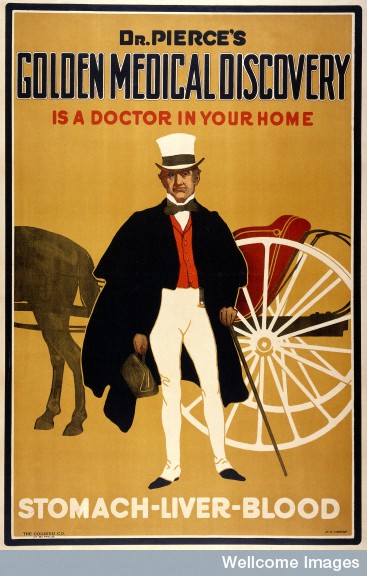
An American physician of the late nineteenth century, with his doctor's bag and horse and buggy. Colour lithograph by E.C. Pease, 1910.
Image Credit: Wellcome Library, London
Last spring, viz. rounded up a number of important visual archives and databases. Viz. readers interested in the history of medicine should consider adding Wellcome Images to that list. A major visual collection of the U.K.’s Wellcome Library, its offerings range “from medical and social history to contemporary healthcare and biomedical science.”
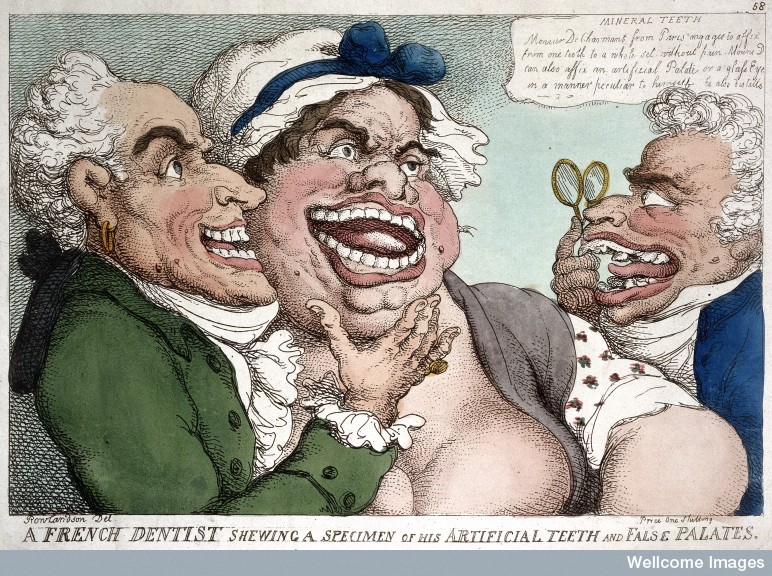
A French dentist showing a specimen of his artificial teeth and false palates. Coloured engraving by Thomas Rowlandson, 1811.
Image Credit: Wellcome Library, London
There’s above all a spirit of freewheeling eclecticism that makes the database so enjoyable to browse. Representations of doctors range from the American dandy in the advert above, to a Japanese watercolor depicting a properly demure doctor-patient relationship, to dramatic canvases set in medical theaters. Images of ephemera from the collection include a medicine chest from the 1933 Mount Everest expedition and Charles Darwin’s whalebone walking stick with a goth-looking skull pommel. Artistic and medical images happily coexist: a digital artwork of a golden DNA double-helix appears next to a scanning electron micrograph of sickled and normal red blood cells.
In sum, Wellcome Images offers an experience of discovery and play akin to rooting around in a physical archive. The downside, as in a physical archive, is that one might struggle to contextualize these findings—the Wellcome's categories (e.g., “Nature,” "Life") are too broad to help us organize the images meaningfully.
Francis Crick Papers
Image Credit: Wellcome Library, London
In preparation for a brief unit on Literature and Medicine later this semester, I also decided to test out the database's search function, which allows users to refine results by date and technique. The search term "hysteria" resulted in 28 hits, turning up mainly photographs of female patients from the 1890s. This image search would make for a possible in-class exercise when we discuss Charlotte Perkins Gilman's "The Yellow-Wallpaper." More broadly, the search results would work to initiate a conversation about the early use of photography as diagnostic tool, founded on a belief in its unassailable status as scientific evidence.
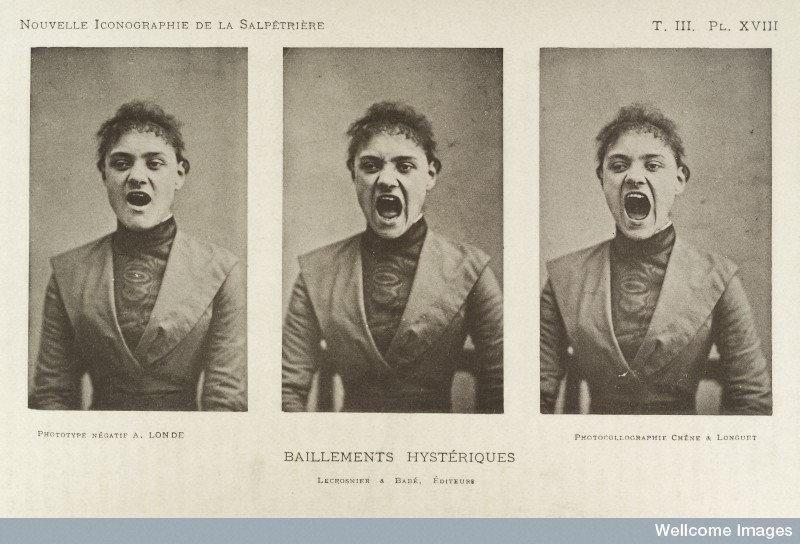
Three photographs in a series showing a hysterical woman screaming. Albert Londe, c. 1890.
Image Credit: Wellcome Library, London
The Wellcome Library allows watermarked-versions of their images to be “freely available for download for personal, academic teaching or study use, under one of two Creative Commons licences.” Visit the site for additional information about their terms of use.


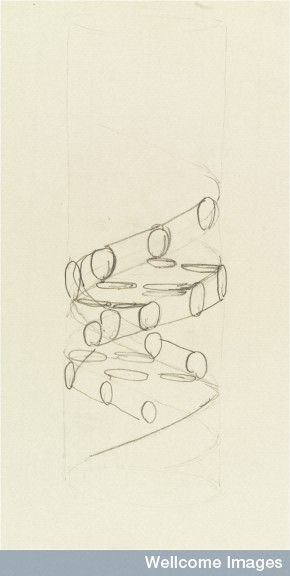
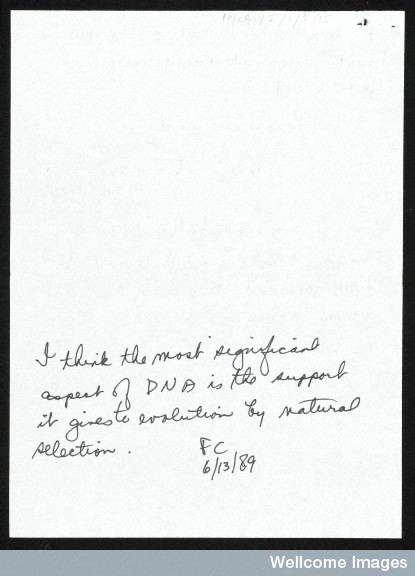

Recent comments
2 years 29 weeks ago
2 years 44 weeks ago
2 years 44 weeks ago
2 years 50 weeks ago
3 years 4 weeks ago
3 years 4 weeks ago
3 years 4 weeks ago
3 years 6 weeks ago
3 years 6 weeks ago
3 years 6 weeks ago